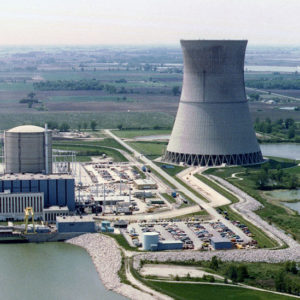Some promises aren’t meant to be kept; others can’t be kept. The Democrats running for president are offering both — and no one’s calling them on it.
They all promise to curtail carbon-dioxide emissions to “net zero” by — depending on the candidate — 2045 (Cory Booker) or 2049 (Andrew Yang) or 2050 (Joe Biden). Bernie Sanders is the most moderate of the bunch; he says he’ll reduce carbon-dioxide emissions 71 percent by 2030.
But what would this entail, exactly? And can it even be done?
According to a very interesting analysis by professor Roger Pielke of the University of Colorado published recently by Forbes, it would entail putting at least one new nuclear reactor online every week until 2030 or 2050 (the number of new reactors needed to get to “net zero” carbon-dioxide emissions depending on how soon we want to get there). Leaving aside the regulatory hurdles involved in permitting a single new plant — and the money that would be have to be found to finance the construction of scores of new plants.
Pielke is a mathematician who has done the math, and the numbers are daunting.
Assuming we’re not going to just turn off the lights — and shut down industrial civilization — it will be necessary to replace the 1,900 million tons of fossil-fueled energy (i.e., coal, oil, natural gas) the U.S. consumes annually with … something else.
Something else that doesn’t emit carbon dioxide.
Pielke, who is also a climate scientist who worked at the National Center for Atmospheric Research, says the only way to replace that much fossil fuel energy with “carbon-neutral” energy using actually feasible technology would be to use nuclear energy. A lot of it.
In his Forbes article, Pielke explains that one nuclear power plant like the Turkey Point reactor complex in Homestead, Florida, generates the equivalent of about 1 million metric tons (1 mteo) of fossil-fueled energy each year. That’s a lot of juice but it hardly puts a dent in the problem (assuming that carbon-dioxide emissions are, in fact, a problem).
Where, asks Pielke, will the remaining 1,800 million metric ton-equivalents come from?
Bernie doesn’t say. Or Cory or Andrew or Elizabeth or Joe, either. Unicorn flatulence, perhaps?
And the world needs at least 11,743 million metric tons of energy to keep the lights on today.
Pielke cites International Energy Projections about world energy demand tomorrow. The IEA estimates that “global energy consumption will increase by at least 1.25 percent per year to 2040.”
This will mean a lot more mteos and reactors (or some other carbon-neutral way) to produce them.
“To achieve net-zero carbon dioxide emissions by 2050, the world would need to deploy three Turkey Point nuclear plants’ worth of carbon-free energy every two days, starting tomorrow and continuing to 2050,” Pielke writes.
“And at the same time,” he adds, the fossil-fueled equivalent of one Turkey Point plant would have to be “decommissioned every day, starting tomorrow and continuing to 2050.”
This isn’t just a tall order. It’s an impossible one.
To appreciate just how impossible, try to visualize 1,500 wind turbines erected over 300 square miles every single day from now to 2050. This is what it would entail — in wind-farm equivalents — to replace all the fossil-fueled energy production that’s online today.
Not counting the increased demand tomorrow.
Pielke also doesn’t factor into his analysis the effect on U.S. and global energy demand of electrifying transportation — the increased draw on the grid of millions of 400 volt electric cars charging up — so his projections and estimates are likely very conservative.
He does point out that it’s not merely energy production that will have to be replaced. “Fossil fuels are the basis for many products (e.g., plastics, rubber) central to the functioning of the global economy and eliminating them is not nearly as simple as unplugging one energy source and plugging in another.”
So, carbon neutrality is a long way off. And getting more so.
Pielke notes that the gap between carbon-free sources of energy production such as wind farms, solar (and nuclear) is widening by about 174 million metric ton equivalents each year. To compensate — to close the gap — would entail a several hundred percent net increase in the deployment of carbon free energy. These numbers are “sobering.”
Indeed.
Almost as much as the promises made by the Democrats seeking their party’s nomination are misleading.
“When you see an auction of promises in climate policy for emissions reductions, ask instead for rates of deployment of carbon-free energy technologies and rates of decommissioning of existing fossil fuel infrastructure,” Pielke writes.
“Then do the math and see if it adds up.”

